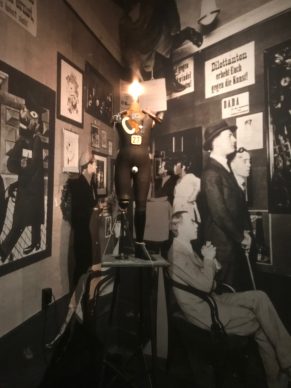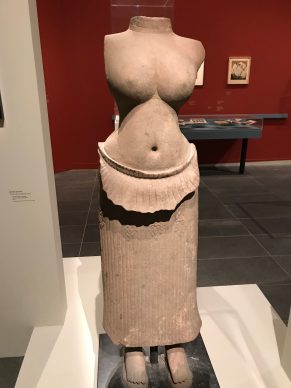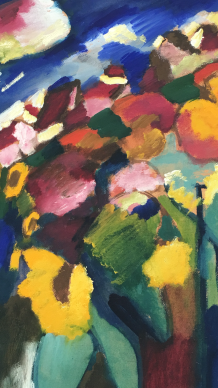Western modernity has been greatly influenced by tribal art: this is nothing new.
It is common to see African masks alongside cubist pieces and other modern artworks, as is the case in the excellent Derain exhibition currently showing at the Centre Pompidou.
Some gems from the collection of Oceanic art belonging to the surrealist André Breton are exhibited in all their grandeur at the Louvre’s Pavillon des Sessions…
But on display until 19 February at the Musée de l’Orangerie, there is an exhibition exploring the subtler relationship between these two creative spheres.
Dada Africa, the title of the exhibition, refers to Dada as the movement that was anti-convention and anti-constraints, whether political or aesthetic, born out of the traumas of the First World War, and which was influenced by not only the forms but also the customs of distant lands.
It was as though, after the cataclysm of war, the solution for a better life and for new creations lay elsewhere on earth.
The Orangerie exhibition offers in its choice of artists the opportunity for the discovery of lesser-known artworks.
One of the Dada movement’s specialities is sound poetry: a series of sounds that don’t always have a meaning, but which together create a unique kind of vocal music.
Cécile Debray, co-curator of the exhibition and newly appointed director of the Musée de l’Orangerie, traces the phenomenon back to Tristan Tzara (1896-1963), who was then still in Zurich (it was there at the Cabaret Voltaire that the movement was born, before spreading to Paris and beyond), and his interest in anthropology, which went as far as reading specialist magazines and organizing what would later be called performances, where he would read out his texts of African, Malagasy and Oceanic origin.
She explains the idea behind the exhibition:
The German writer Hugo Ball writes in his diary in 1917 about an evening at the Cabaret Voltaire: “It was total art: paintings, music, dancing and poems. There we were.”
Cécile Debray highlights the difference between the modern artists inspired by tribal art forms and the Dada artists:
Dada also revisits the hierarchy of art forms.
Sophie Taueber Arp (1889-1943) explores abstraction through the medium of embroidery, directly inspired by American Indian fabrics.
One of the nicest surprises in the exhibition is the space dedicated to the German artist Hannah Höch (1889-1978), best known for her collages.
She would go to the museum of ethnography in Berlin and make unique photomontage pieces, halfway between a Japanese mask or the body of an Eastern goddess and a modern-day figure.
A critique of stereotypes using images…
The last word is given to Tristan Tzara, who resumes the Dada ambiance, which seems to find great echoes in the 21st century:
“Dance dance my beautiful insouciance. The world burns and you laugh, with forced laughter”.
And with the fantastic Ursonate recorded by Kurt Schwitters in 1932:
Until 19 February. www.musee-orangerie.fr
Support independent news on art.
Your contribution : Make a monthly commitment to support JB Reports or a one off contribution as and when you feel like it. Choose the option that suits you best.
Need to cancel a recurring donation? Please go here.
The donation is considered to be a subscription for a fee set by the donor and for a duration also set by the donor.


















